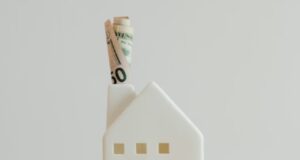TALLAHASSEE, FL – August 3, 2012 – (RealEstateRama) — Mold in flood-damaged homes and other structures can cause health problems if it is not eliminated. People with asthma, allergies and other breathing conditions may be more sensitive to mold, and people with immune suppression are more susceptible to infections caused by mold, according to the Centers for Disease Control and Prevention.
Quick action can minimize the damage caused by mold and stop its spread. Do not wait for an inspector to begin cleanup. If possible, take pictures of the damage.
The CDC and the Environmental Protection Agency recommend the following steps:
- Open windows and doors and use fans to dry out the building as quickly as possible. If possible, use wet vacuums to remove water and use dehumidifiers in closed spaces.
- When working in an affected building, wear eye protection, latex or rubber gloves and a mask.
- Remove baseboards and soaked drywall to a foot above the watermark and discard. Drain walls by drilling holes or pulling non-porous paneling away from the studs. Check the interior of walls for mold.
- Remove porous items that have been wet for more than 48 hours and cannot be thoroughly cleaned and dried – carpeting and carpet padding, upholstery, wallpaper, drywall, floor and ceiling tiles, insulation, leather, wood, paper, food and clothing. If there is any doubt about whether the item has been affected by mold, discard it.
- Hard, non-porous surfaces (metal, glass, solid wood, plastic, etc.) should be washed with non-ammonia detergent and hot water. Scrub rough surfaces like concrete. Disinfect all cleaned surfaces with a solution of water and bleach; rinse after 10 minutes. Never mix bleach with ammonia.
If the area to be cleaned exceeds 10 square feet or if assistance is required to complete cleanup, consult a professional contractor. For more information, go to http://epa.gov/mold/cleanupguidelines.html.
People who need help cleaning their homes can call the Florida Volunteer and Donation Hotline, which can connect survivors with a local volunteer agency. The number is 800-FL-HELP-1 (800-354-3571).
For more information on Florida’s disaster recovery, visit www.fema.gov or www.floridadisaster.org. On Facebook, go to www.facebook.com/FloridaSERT. To receive Twitter updates: www.twitter.com/FLSERT or www.twitter.com/femaregion4.
FEMA’s mission is to support our citizens and first responders to ensure that as a nation we work together to build, sustain, and improve our capability to prepare for, protect against, respond to, recover from, and mitigate all hazards.
Disaster recovery assistance is available without regard to race, color, religion, nationality, sex, age, disability, English proficiency or economic status. If you or someone you know has been discriminated against, call FEMA toll-free at 800-621-FEMA (3362). If you have a speech disability or hearing loss and use a TTY, call 800-462-7585 directly; if you use 711 or Video Relay Service (VRS), call 800-621-3362.
FEMA’s temporary housing assistance and grants for public transportation expenses, medical and dental expenses, and funeral and burial expenses do not require individuals to apply for an SBA loan. However, applicants who receive SBA loan applications must submit them to SBA loan officers to be eligible for assistance that covers personal property, vehicle repair or replacement, and moving and storage expenses.













